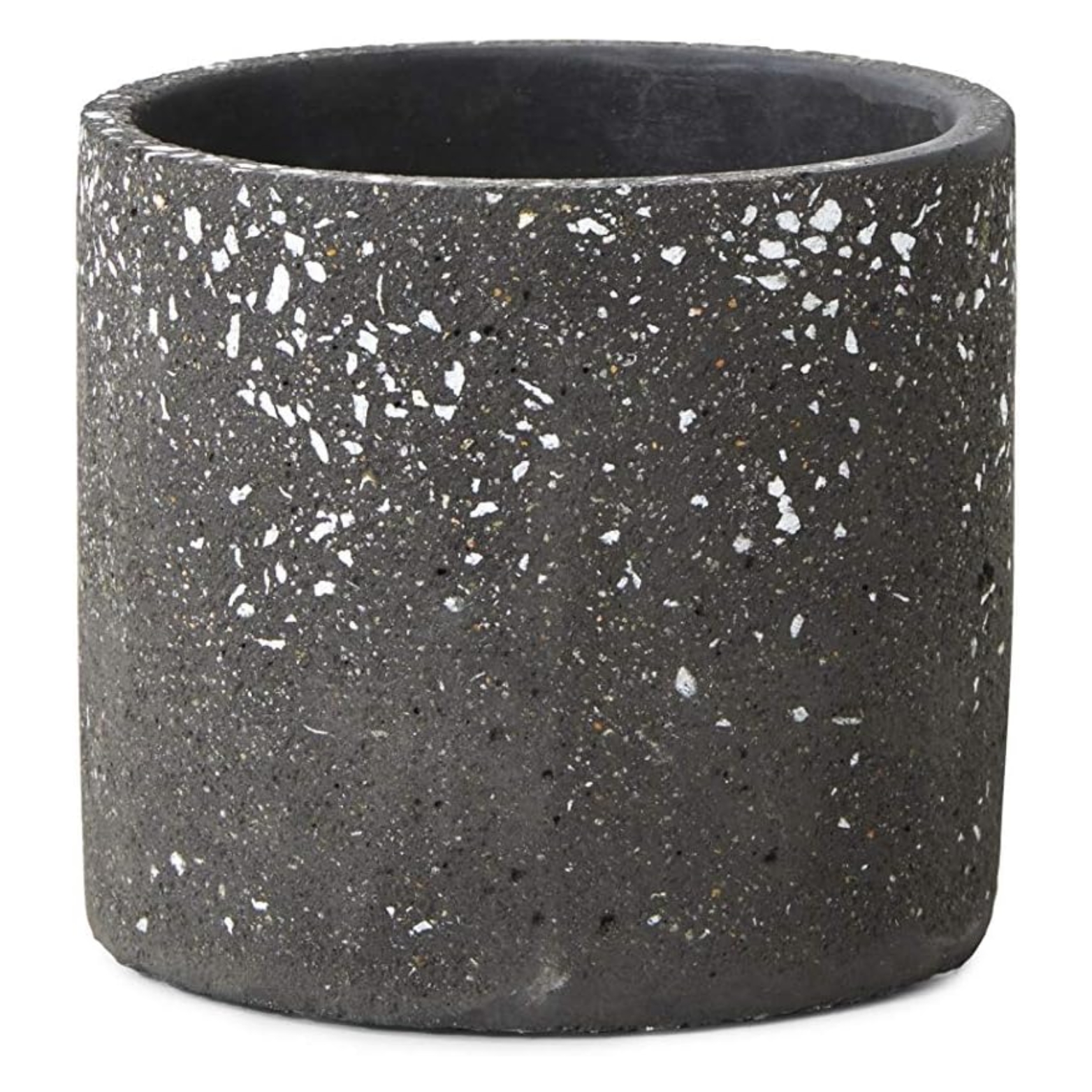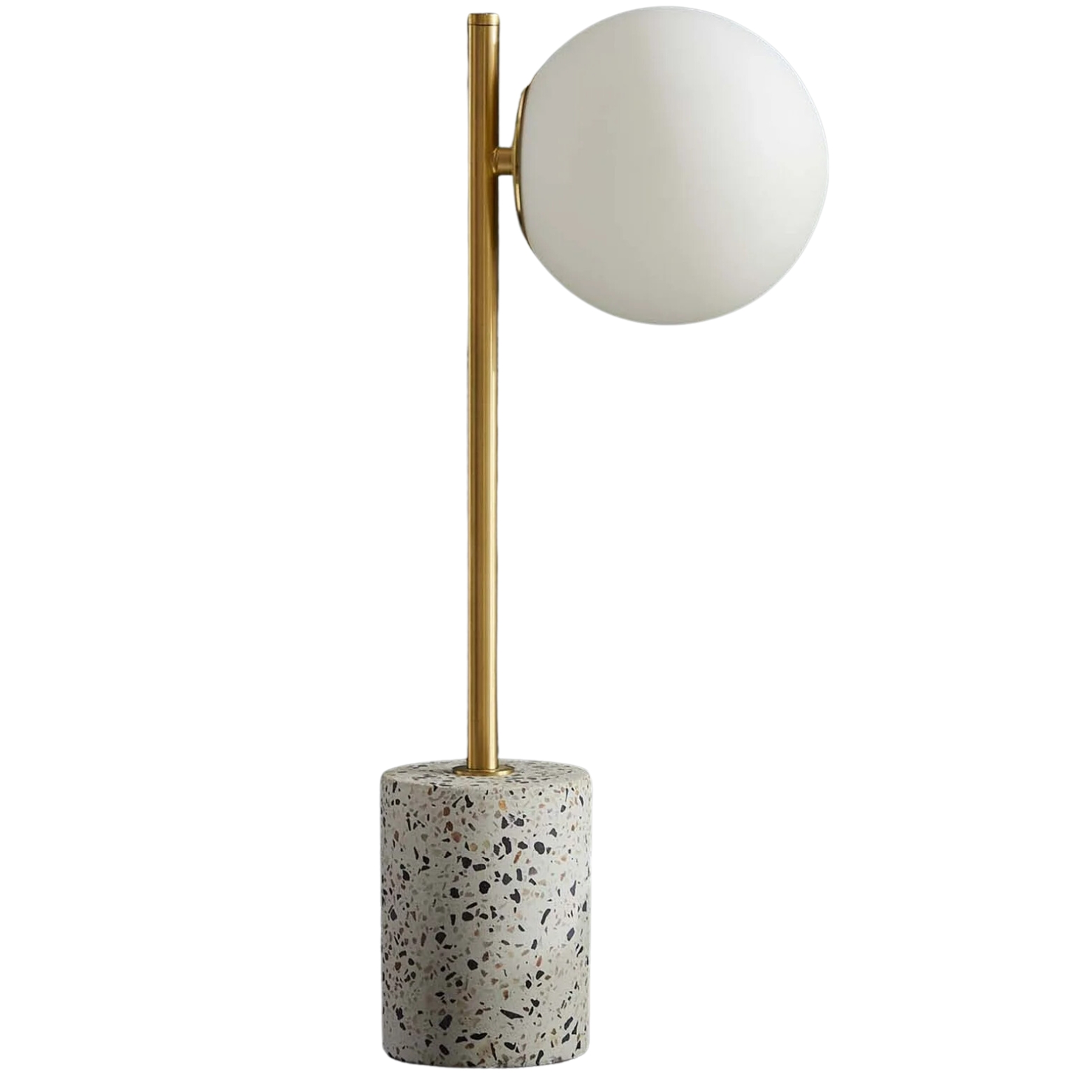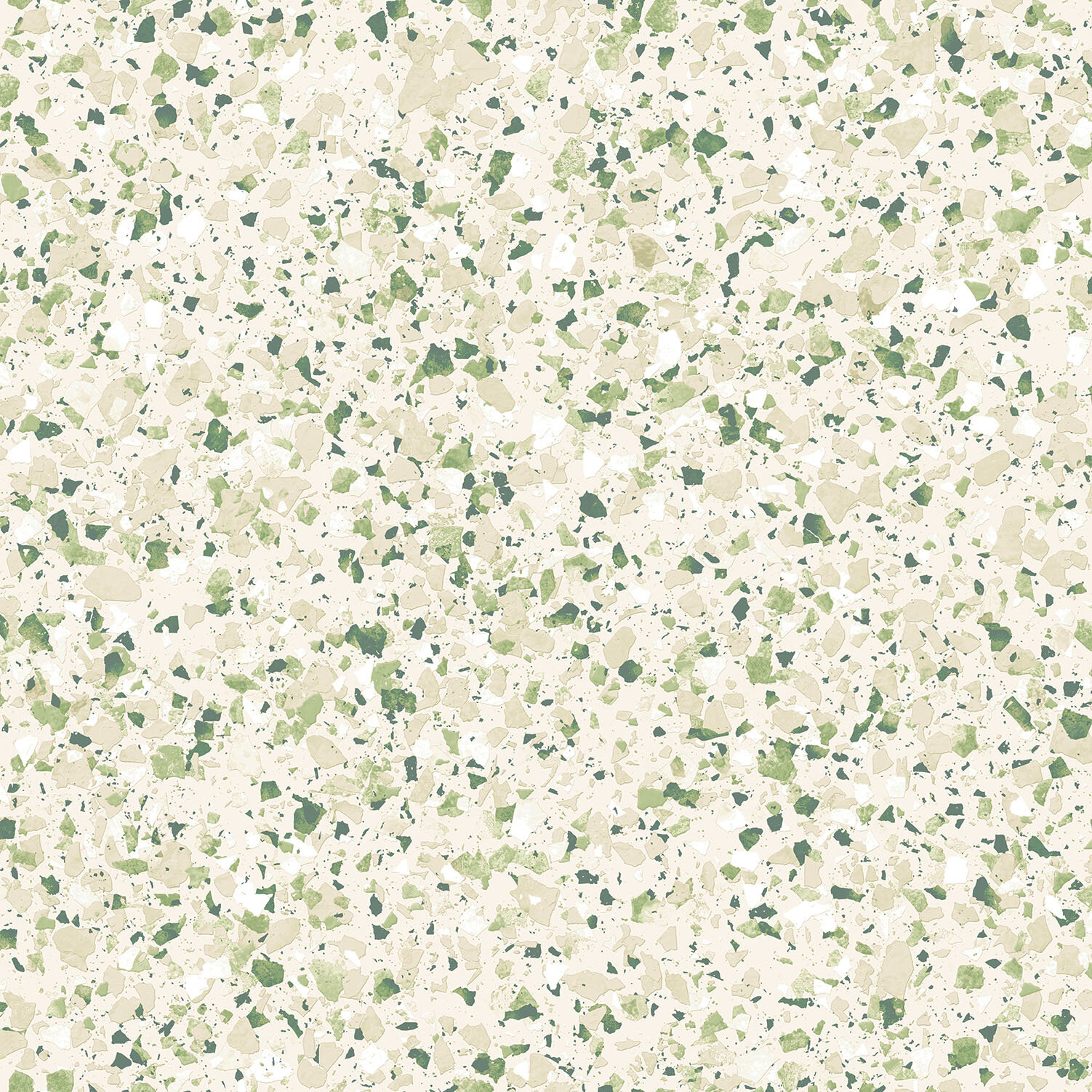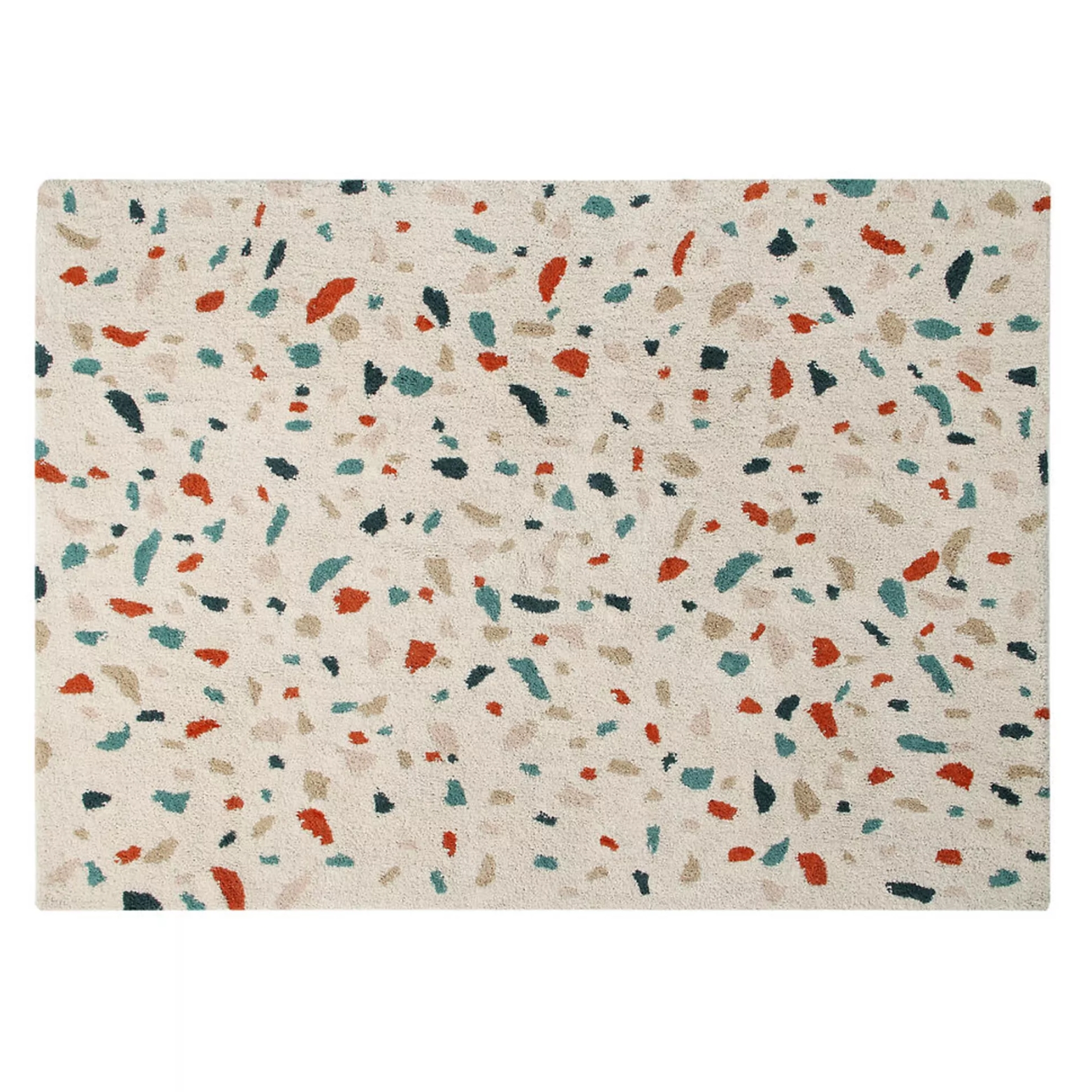An Easy-to-Digest Expert Guide to Terrazzo — The Splashy, Speckled Surface Designers Aren't Done With Yet
Originally dating back to ancient times, this versatile surface is a design-world staple these days — here's everything you need to know
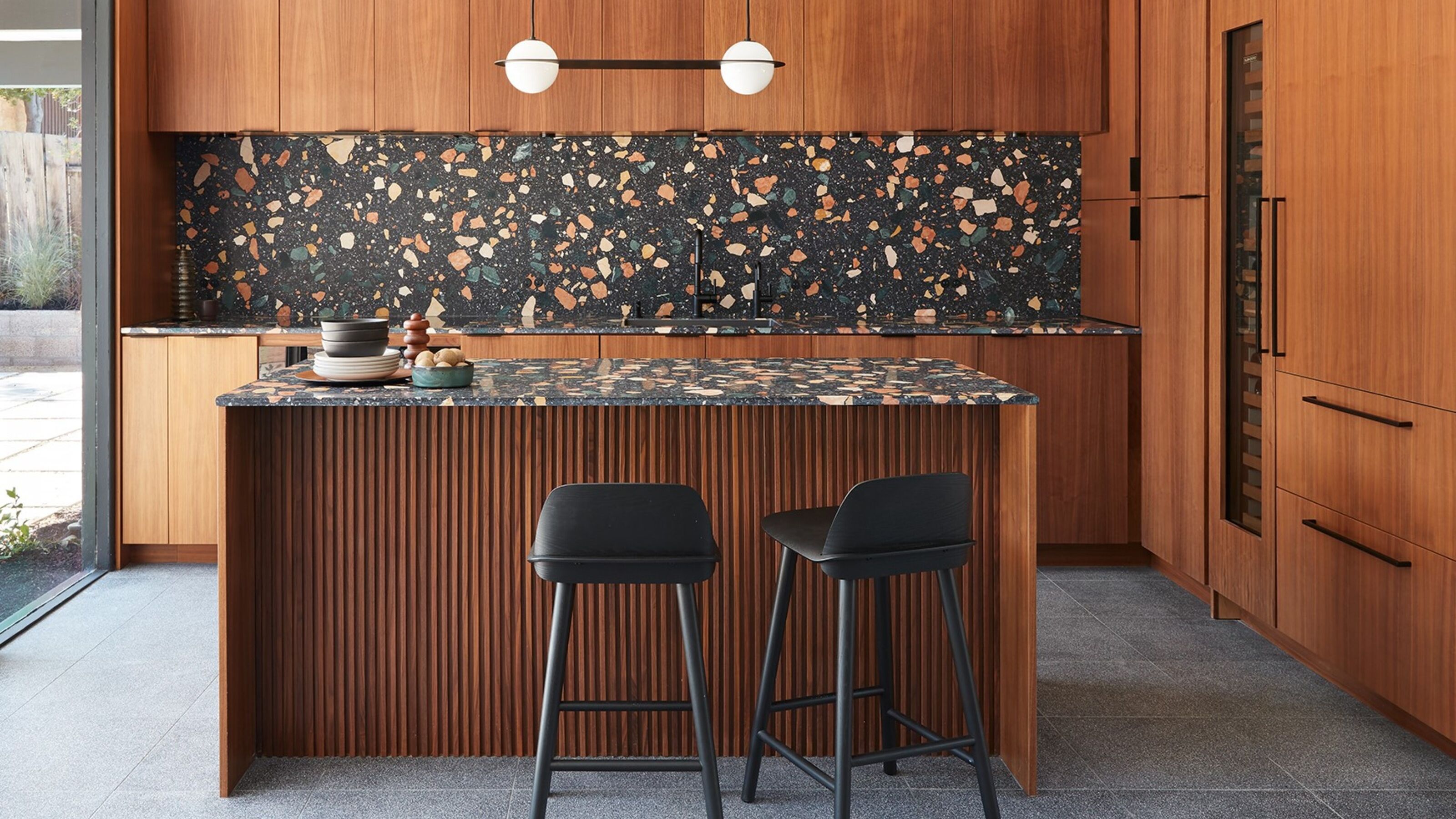

I often find that when I fill my home with fun designs, it inspires me to live more creatively. And what's more whimsical than terrazzo — whether on the floor, in the kitchen, on furniture, inside or outside. But what is terrazzo? Put simply, terrazzo is either a cement or composite that consists of colored chips of marble, granite, glass, quartz, or other relevant materials.
And while it is a style that dominated in the 1920s, the technique actually dates back more than 500 years to Italy, where workers would salvage stone scraps, and repurpose them to make the most stunning designs.
Like with most interior design trends, its popularity has waxed and waned over the years (my mother would shudder at the thought of it), but the colorful concrete material is having a contemporary resurgence. Whether its terrazzo flooring, kitchen countertops, or clever furniture, the design world is falling back in love with terrazzo.
Need to catch up? Below, I've broken down everything you need to know about the stylish speckled surface. What is terrazzo? Let's find out.
What Is Terrazzo, and What Is It Made of?

Interior designer Christine Jahan, principal at Christian Jahan Designs, explains that, "Terrazzo is a decorative concrete material (often used as a type of flooring and kitchen countertop) that is made from pieces of marble, quartz, granite, glass, and/or other materials, that are combined with a binder like cement or epoxy."
And the result? A surface that looks bespoke and is flush with character. Besides its obvious glamour, terrazzo is often chosen for its versatility and customization. The intricate mix of color and material creates depth and distinction in a space, allowing it to become either the accent feature of a room or to blend subtly with its surroundings. A clever chameleon in the world of design.
James Mellan-Matulewicz, creative director and an interior designer at Bobbi Beck adds, "It’s also eco-friendly, as many terrazzo homeware products are made using recycled materials, and its longevity means it’s a sustainable choice for interiors. Not to mention, its durability, low maintenance, and resistance to wear also make it ideal for high-traffic areas."
Is Terrazzo in Fashion?
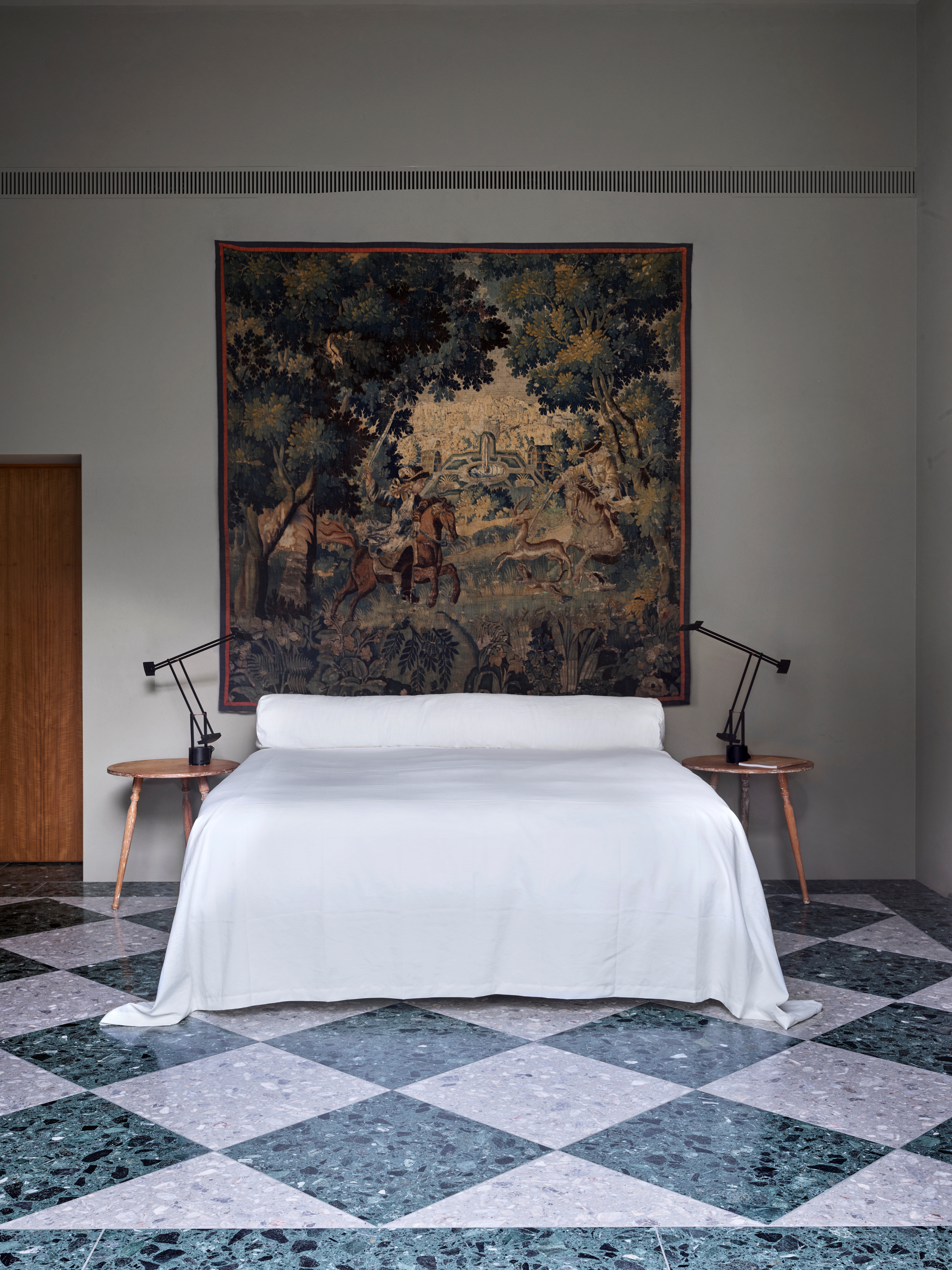
To many, terrazzo is considered to be a timeless design style. While it first made its debut in the United States around the 1890s, it didn't really hit the spotlight until the 1920s, and then rose in popularity again in the '60s, where it stuck around until the '80s. Such is the trend cycle.
Lisa Schmitz, principal designer at Lisa Schmitz Interior Design, says, "While many associate terrazzo with the sleek aesthetics of mid-century design, this centuries-old technique has roots dating back to ancient civilizations. However, its versatility makes it as relevant today as ever, seamlessly integrating into both modern and traditional interiors."
Though today's take on terrazzo is slightly more daring and in line with 2025-era interiors, it seems safe to conclude that terrazzo's insistently cyclical nature lends itself more to timeless design than a fleeting trend.
Where Should You Use Terrazzo?
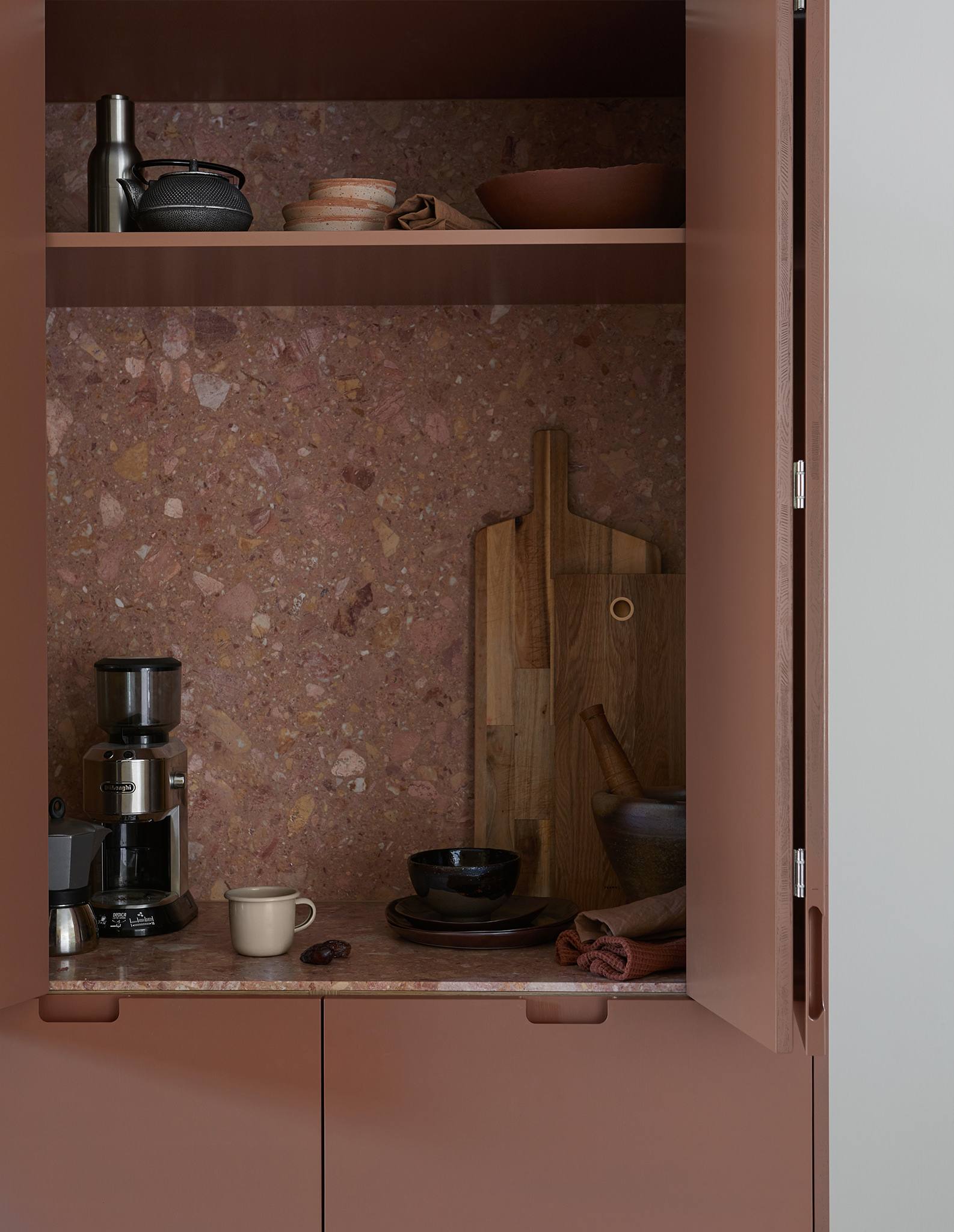
Terrazzo can be used in various ways, as it’s an incredibly versatile design that adds a touch of modernity and uniqueness to any home. Whether you go for a bold, black counter with specks of pink, yellow, and green or a subtle terracotta design that's akin to color drenching, terrazzo can work in both subtle and maximalist designs.
James explains that a few of his favorite ways to incorporate terrazzo into interiors are:
1. Terrazzo Worktops and Tables: Create a striking centerpiece in kitchens, dining areas, or offices by adding a terrazzo surface. The speckled pattern effuses artistry, effortlessly elevating the design of a space.
2. Terrazzo Flooring: "Its durability and seamless appearance make it perfect for areas like kitchens, hallways, and bathrooms, while its vibrant patterns add personality," says James. Even if you opt for a neutral variation of the tile, a textured floor pattern will never be boring.
3. Terrazzo Wallpaper: The mix of shapes and colors in terrazzo wallpaper (an imitation of the pattern, of course) works beautifully as a feature, "Creating a playful yet sophisticated focal point in living rooms, kitchens, or bathrooms," says James. As for styling it, James says, "Simple furniture and neutral tones allow the wallpaper to stand out while incorporating complementary colors in accessories or textiles ties the look together."
4. Terrazzo in Bathrooms: A spa-like retreat only gets better when a little style is involved. From bathroom vanity ideas to sinks trends or shower wall ideas, terrazzo works beautifully in bathrooms, adding color and sophistication to a typically neutral space.
5. Terrazzo Décor: "Smaller terrazzo pieces, such as kitchenware, lamp bases, trays, or plant pots, are an excellent way to introduce the material into a space without committing to larger installations," says James.
And for that, I've found some of my favorite terrazzo décor to shop, below.
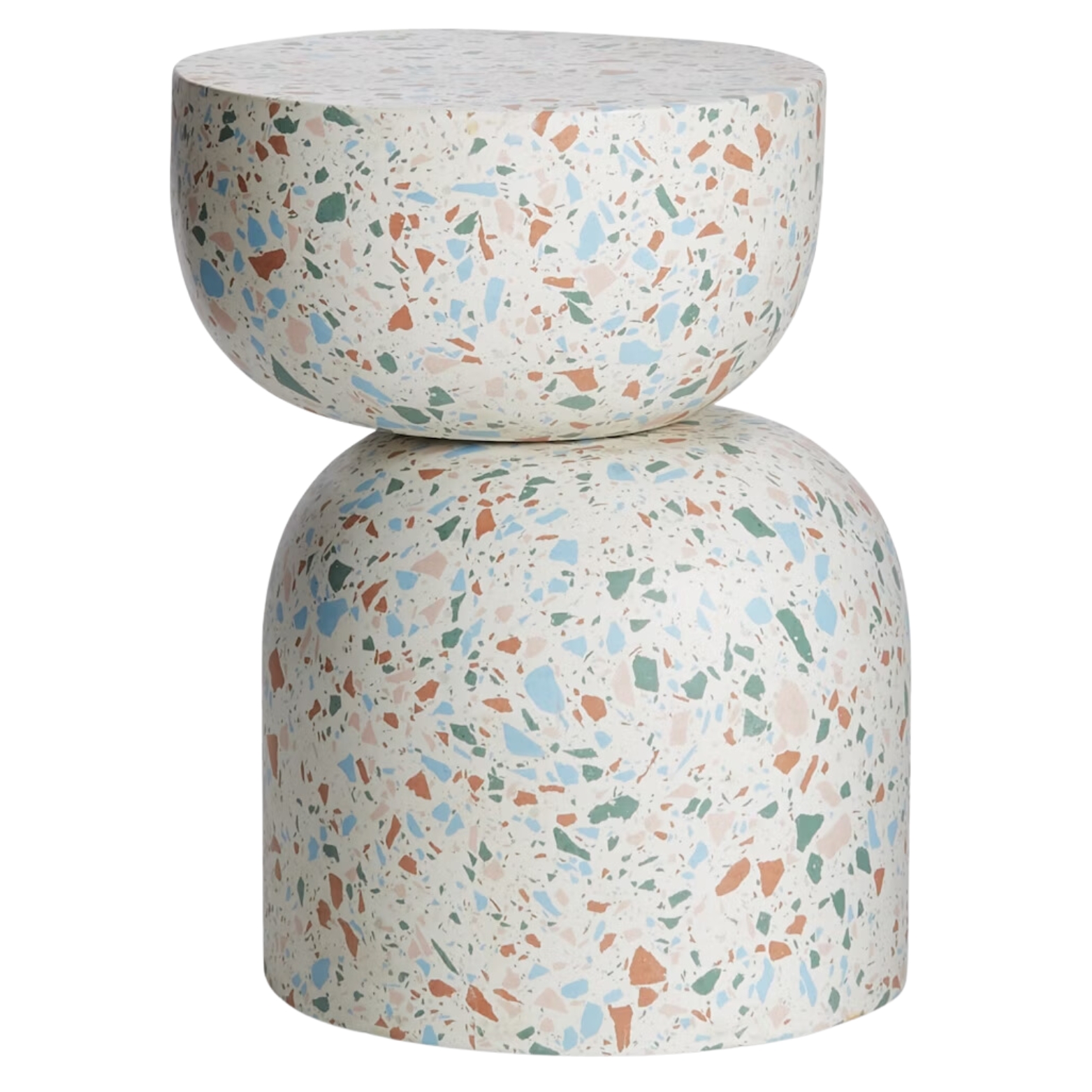
Price: $1,476, Was: $1,845
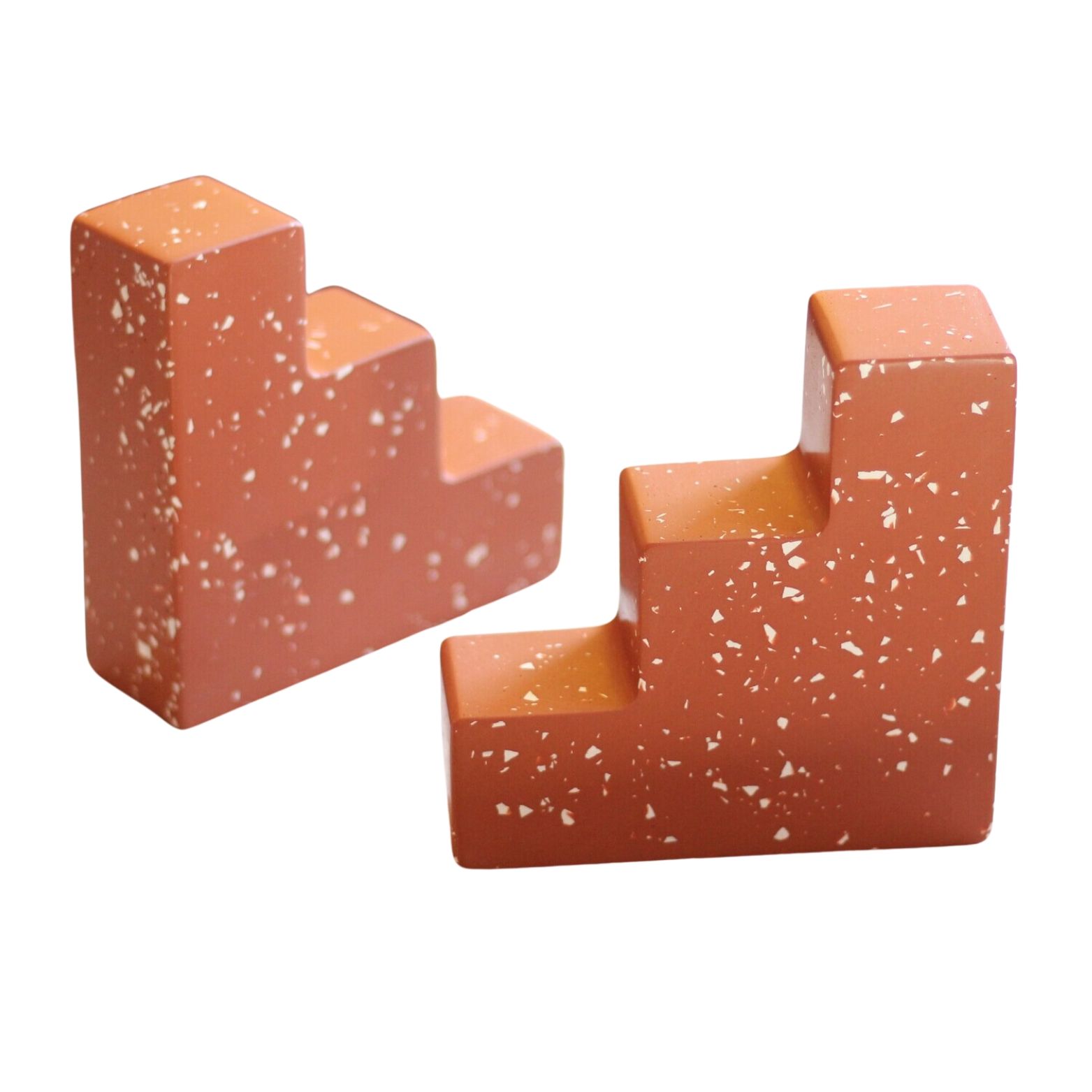
Price: $104.36, Was: $173.93
How to Style Terrazzo
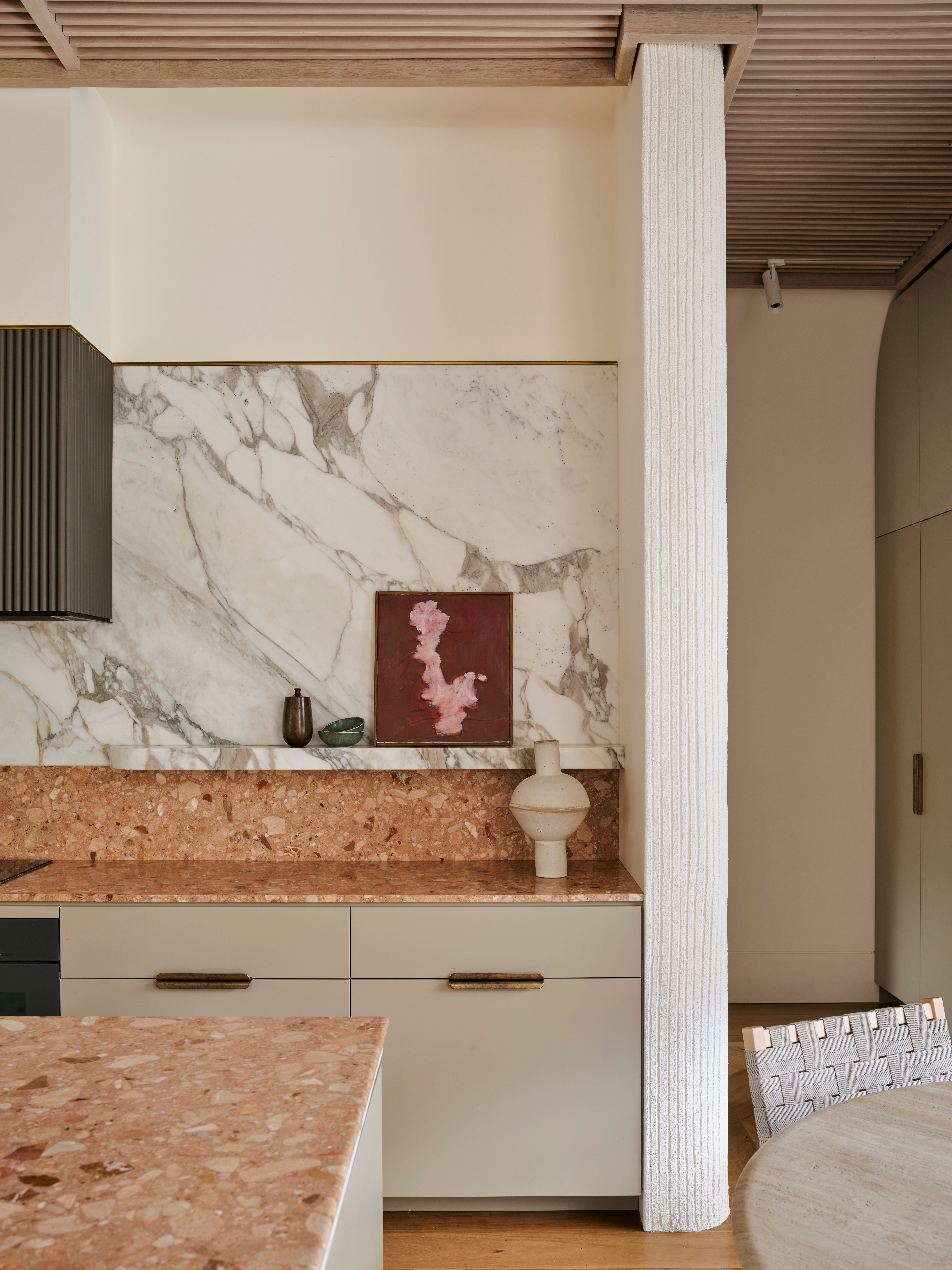
When styling a material with such a distinct visual texture as terrazzo, it’s important to balance its boldness with complementary elements. "Terrazzo is a statement in itself, so my advice is to avoid overloading the space with too many other patterns or colors," says James. "Keep the surrounding design clean and minimal to let the terrazzo take center stage."
Complement terrazzo with neutral tones such as whites, grays, or muted shades that won’t compete with its patterns. Alternatively, soft, natural materials like wood, linen, or rattan accessories create a warm and inviting contrast to its sleek finish.
"In our Vintage Vibe project (featured below), we elevated terrazzo beyond just flooring — bringing the same pattern onto wall panels to unify the space," explains interior designer Lisa Schmitz. "The space visually expanded by carrying a consistent texture across floors, walls, and even countertops. A great option for both small bathrooms, like this, and large interiors."
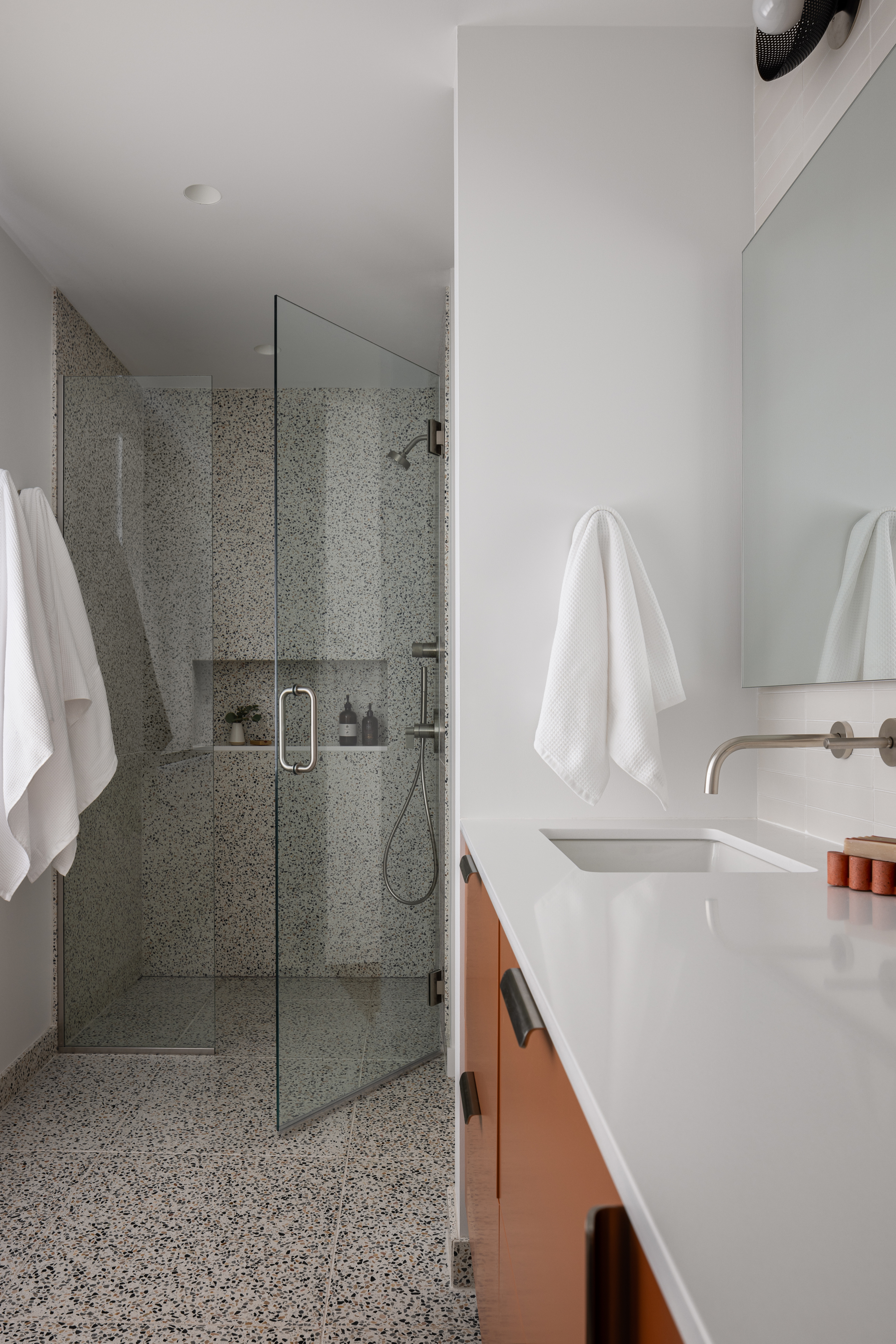
Be The First To Know
The Livingetc newsletters are your inside source for what’s shaping interiors now - and what’s next. Discover trend forecasts, smart style ideas, and curated shopping inspiration that brings design to life. Subscribe today and stay ahead of the curve.

Olivia Wolfe is a Design Writer at Livingetc. She recently graduated from University of the Arts London, London College of Communication with a Masters Degree in Arts and Lifestyle Journalism. In her previous experience, she has worked with multiple multimedia publications in both London and the United States covering a range of culture-related topics, with an expertise in art and design. At the weekends she can be found working on her oil paintings, reading, or antique shopping at one of London's many vintage markets.
-
 The 'New British' Style? This Victorian London Home Embraces Its Owners' Global Background
The 'New British' Style? This Victorian London Home Embraces Its Owners' Global BackgroundWarm timber details, confident color pops, and an uninterrupted connection to the garden are the hallmarks of this relaxed yet design-forward family home
By Emma J Page
-
 Muji Living Room Ideas — 5 Ways to Harness The Calming Qualities of This Japanese Design Style
Muji Living Room Ideas — 5 Ways to Harness The Calming Qualities of This Japanese Design StyleInspired by Japanese "zen" principles, Muji living rooms are all about cultivating a calming, tranquil space that nourishes the soul
By Lilith Hudson
